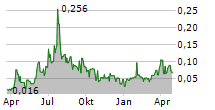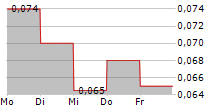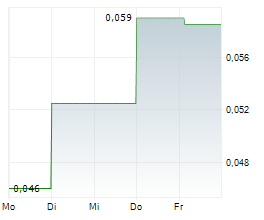Vancouver, British Columbia--(Newsfile Corp. - April 16, 2025) - Sixty North Gold Mining Ltd. (CSE: SXTY) (FSE: 2F40) (OTC Pink: SXNTF) (the "Company" or "Sixty North Gold") announces the first drilling results in its Volcanogenic Massive Sulphide ("VMS") drill program. It has intersected three sulphide zones within diamond drill hole ("DDH") DDH VMS1, and two in DDH VMS 2 testing the targets identified from the VTEM Plus © geophysical survey and subsequent analysis of that data by Mira Geosciences ("Mira").
Dr. Dave Webb, CEO, states, "We are very encouraged from these first two drill holes and will be submitting cores to a certified, independent laboratory for assays shortly. We have additional drill holes planned on the Upper Horizon, and plan to test the Lower Horizon when ice breakup reduces our operating costs. We have confirmed significant concentrations of sulphides where our geophysical surveys had identified them. These conductors are on strike of other known economically encouraging VMS mineralization in a belt that hosts other silver and gold-rich lead, zinc, +/- copper sulphide concentrations. Our proximity to the Bluefish Hydroelectric Power Plant, and the road network from Yellowknife makes these targets appealing for potential development in the future, with reduced infrastructure costs. The VMS zones provide the Company with an exciting diversification and a potential portfolio of strategic metals, in addition to our planned underground Mon Gold Mine on the same property."
VMS deposits are polymetallic and produce 27% of Canada's copper, 49% of it's zinc, 20% of its lead, 40% of its silver and 3% of its gold (ref. Dr. J. Franklin, "Volcanic-associated massive sulphide metals; in Geology of Canadian Mineral Deposits, 1996", Galley et al., 2007). VMS deposits often occur in clusters of sedimentary or near sedimentary deposits formed at or near the ocean floor and generally thin as they become more distant from the source or vent area. In addition they are often zoned from copper and gold enriched near the vent to lead and zinc enriched farther away. Conceptually, a typical VMS target might average between nil to 3% copper, nil to 7% zinc, nil to 3% lead, nil to 4.0 gpt gold, and nil to 160 gpt silver, and average between 3 to 9 million tonnes.
VMS 1 was drilled west to east at -50 degrees to test the strong conductor in the Upper Horizon at Ewe Lake within the Sito Lake mixed mafic to felsic tuff horizon. It was collared in mafic tuffs, transitioned into felsic crystal tuffs at 71.2 m and ended at 130 m in felsic tuffs, intersecting three mineralized horizons.
DH VMS 1
| Zone | From (m) | To (m) | Mineralization | Alteration |
| 1 | 8.7 | 9.8 | 6-8% po>aspy>py | Chl, bio |
| 2 | 59.5 | 63.0 | 4-15% po>py>cpy>aspy | Chl, bio |
| 3 | 71.2 | 76.2 | 0.1 to 1% po>py | Chl, bio |
po=pyrrhotite; py=pyrite; cpy=chalcopyrite; aspy=arsenopyrite; chl=chlorite, bio=biotite
Zone 2 is thought to explain the conductor with multiple iron and base metal sulphides within mafic and felsic tuffs over 3.5 m. The true width is estimated to be 3.0 m. Three 1 cm thick massive sulphide domains within up to 15% disseminated sulphides were observed. Fine-grained brown sphalerite may be present but the abundance of brown biotite complicates its identification.
VMS 2 was drilled at the same set-up and azimuth as VMS 1 but at a -65 degree inclination to intersect the target zone at a deeper level. The drill hole was collared in mafic tuffs, transitioned into felsic crystal tuffs at 81.2 m and ended at 182 m in gabbro, intersecting two mineralized horizons.
DH VMS 2
| Zone | From (m) | To (m) | Mineralization | Alteration |
| 2 | 58.4 | 69.2 | 1-2% po>py>cpy | Chl, bio |
| 3 | 81.2 | 91.0 | 8-20% po=py>cpy | Chl, bio |
po=pyrrhotite; py=pyrite; cpy=chalcopyrite; aspy=arsenopyrite; chl=chlorite, bio=biotite
Zone 2 correlates with the sulphide-rich zone intersected in VMS 1. It contains more sulphides including four 1 cm massive sulphide zones and what is believed to be fine-grained brown sphalerite. The true width of this horizon is estimated to be 7 m.
Six conductors were modeled by Mira, including an exposed VMS showing, the 5656 Zone which grades 1.0 gpt gold, 203 gpt silver, 0.59% lead and 0.96% zinc over 0.45 m in trench samples (see NR November 6, 2018). A cluster of much larger, more prominent conductors along strike include the Lower Horizon which includes the Mac Tuff showing 2 km to the south (not on the Mon Property). The Upper Horizon occurs in a mixed mafic and felsic tuff horizon, 300 m stratigraphically above the Lower Horizon.
Dr. D.R. Webb, Ph.D., P.Geol., P.Eng., President & CEO of the Company, is the Qualified Person for this release and has reviewed and approved of its technical content.
About the Company
Sixty North is developing mining operations for gold on its 100-per-cent-owned Mon Gold Project. Historically, the Project has extracted 15,000 tonnes of ore to depths of only 15 metres below surface, recovering an estimated 15,000 ounces of gold in the 1990s (NI 43-101, August, 2023). The North ramp has been reopened and has been extended to the target portion of the vein. The company plans to develop stopes in the East Limb, West Limb and DD Zone to extract and stockpile the vein material on surface. Upon confirmation of the grade and tonnage, the Company plans to bring a permitted mill in to process this and continuing mined material.
The VMS target, and the shear zones are separate targets on the property and will be tested when it is appropriate to do so.
For more information, please refer to the Company's public filings available on SEDAR (www.sedarplus.ca), under the Company's profile.
ON BEHALF OF THE BOARD OF DIRECTORS
"Dave Webb"
Dave Webb, President & CEO
For further information, please contact:
Dave Webb
Tel.: 604 818-1400
Email: dave@drwgcl.com
Website: www.sixtynorthgold.com
Statements about the Company's future expectations and all other statements in this press release other than historical facts are "forward-looking statements". Such forward-looking statements are based on numerous assumptions, and involve known and unknown risks, uncertainties and other factors, including risks inherent in mineral exploration and development, which may cause the actual results, performance, or achievements of the Company to be materially different from any projected future results, performance, or achievements expressed or implied by such forward-looking statements. Further details about the risks applicable to the Company are contained in the Company's public filings available on SEDAR (www.sedarplus.ca), under the Company's profile.
Neither the Canadian Securities Exchange nor its Regulation Services Provider accept responsibility for the adequacy or accuracy of this news release.

To view the source version of this press release, please visit https://www.newsfilecorp.com/release/248627
SOURCE: Sixty North Gold Mining Ltd.



